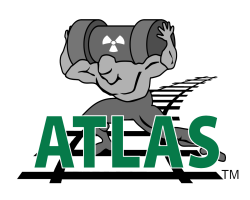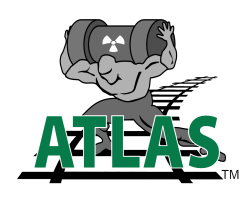Category of Content
Siting Experience Documents Only
Publication Date
Subject Matter
Keywords
M4SF-19ID020303045- Atlas Railcar Phase 3 Final Report
M4SF-19ID020303045- Atlas Railcar Phase 3 Final Report
Appendix B – Revised Railcar-to-Cradle Attachment Interface
Appendix B – Revised Railcar-to-Cradle Attachment Interface
Appendix D – Revised Conceptual Cradle Design Family 4
Appendix D – Revised Conceptual Cradle Design Family 4
ATLAS Railcar Design Project Status Report
ATLAS Railcar Design Project Status Report
DOE Atlas Railcar Project End-of-Phase 2 Final Report
DOE Atlas Railcar Project End-of-Phase 2 Final Report
Atlas Phase 2 Final Report Appendix A
Atlas Phase 2 Final Report Appendix A
This document provides a white paper detailing required changes to the DOE Atlas railcar conceptual cradle attachment components and Phase 1 conceptual cradle design due to the addition of the HI-STAR 190 SL and XL casks to the project.
Atlas Phase 3 Report - Prototype Fabrication and Delivery
Atlas Phase 3 Report - Prototype Fabrication and Delivery
The United States Department of Energy (DOE) is preparing for future large-scale transport of spent
nuclear fuel and high-level radioactive waste, which are collectively defined as High-Level Radioactive
Material (HLRM) by the Association of American Railroads (AAR). A part of this preparation includes
designing railcars to be used for the transport of HLRM.
Atlas Phase 2 Report - Preliminary Design
Atlas Phase 2 Report - Preliminary Design
The United States Department of Energy (DOE) is preparing for future large-scale transport of spent nuclear fuel and high-level radioactive waste, which are collectively defined as High-Level Radioactive Material (HLRM) by the Association of American Railroads (AAR). A part of this preparation includes designing railcars to be used for the transport of HLRM.
Mothers for Nuclear Flyer
Mothers for Nuclear Flyer
Mothers for Nuclear Informational Flyer
Interim Storage, Environmental Justice, and Generational Equity
Interim Storage, Environmental Justice, and Generational Equity
With the termination of the Yucca Mountain project, which was proposed to be our nation’s first repository for the disposal of military and civilian spent nuclear fuel and high-level radioactive waste, the future of nuclear waste management and disposal in this country became increasingly uncertain. Interim storage has been advocated by many as a temporary solution while a permanent solution is studied for potentially several more decades to come.
Community Involvement Plan: Area IV, Santa Susana Field Laboratory
Community Involvement Plan: Area IV, Santa Susana Field Laboratory
As a result of the 2007 ruling by the U.S. District Court of Northern California that the DOE must prepare an Environmental Impact Statement (EIS) to evaluate alternatives for cleanup of Area IV of the SSFL, DOE has implemented major changes in its management of SSFL Area IV. As an initial step, this community involvement plan (CIP) outlines a series of activities and programs that intend to engage the public, establish transparency in DOE actions and decisions, and increase input from the community.
Topical Analysis of Nuclear Experts' Perceptions of Publics, Nuclear Energy, and Sustainable Futures
Topical Analysis of Nuclear Experts' Perceptions of Publics, Nuclear Energy, and Sustainable Futures
Nuclear energy experts consider commercial power from fission to be a strong contender to help mitigate the increasing effects of climate change, in part due to its low-to-no carbon emissions. Nevertheless, nuclear energy's history, including meltdowns such as Three Mile Island, Chernobyl, and Fukushima, and dumping in sacred Indigenous land such as Yucca Mountain, raises important concerns in public deliberation over nuclear power.
Nuclear power and the public: an update of collected research on nuclear power
Nuclear power and the public: an update of collected research on nuclear power
The purpose of this research was to collect, analyze, and summarize all of the nuclear power-related surveys conducted in the United States through June, 1981, that we could obtain. The surveys collected were national, statewide, and areawide in scope. Slightly over 100 surveys were collected for an earlier, similar effort carried out in 1977. About 130 new surveys were added to the earlier survey data. Thus, about 230 surveys were screened for inclusion in this report.




